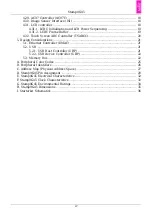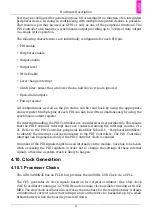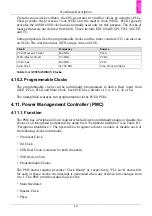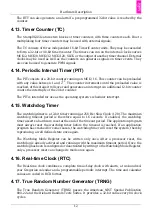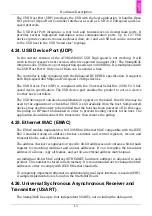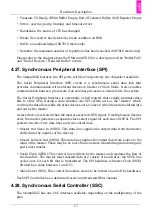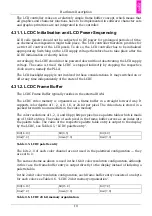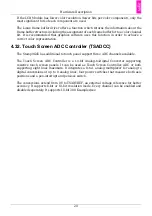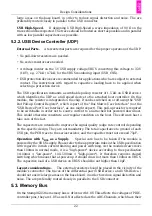
Hardware Description
10
From the main clock oscillator, the CPU generates two further clocks by using two PLLs.
PLLA provides the processor clock (PCK) and the master clock (MCK). PLLB typically
provides the 48 MHz USB clock and is normally used only for this purpose. The clocks of
most peripherals are derived from MCK. These include EBI, USART, SPI, TWI, SSC, PIT
and TC.
Some peripherals like the programmable clocks and the timer counters (TC) can also run
on SLCK. The real time timer (RTT) always runs on SLCK.
Clock
Frequency
Source
PCK (Processor Clock)
800 MHz
PLLA
MCK (Master Clock)
133 MHz
PCK/3
USB Clock
480 MHz
UPLL
Slow Clock
32.768 KHz
Slow Clock Oscillator
Table 4.3. AT91SAM9G45 Clocks
4.10.2. Programmable Clocks
The programmable clocks can be individually programmed to derive their input from
SLCK, PLLA, PLLB and Main Clock. Each PCK has a divider of 2, 4, 8, 16, 32 or 64.
The Stamp9G45 features two programmable clocks PCK0, PCK1.
4.11. Power Management Controller (PMC)
4.11.1. Function
The PMC has a Peripheral Clock register which allows to individually enable or disable the
clocks of all integrated peripherals by using their "Peripheral Identifier" (see Table B.1,
“Peripheral Identifiers”). The System Clock register allows to enable or disable each of
the following clocks individually:
• Processor Clock
• ISI Clock
• USB Host Clock (common for both channels)
• USB Device Clock
• Programmable Clocks
The PMC status register provides "Clock Ready" or, respectively, "PLL Lock" status bits
for each of these clocks. An interrupt is generated when any of these bits changes from
0 to 1. The PMC provides status flags for the
• Main Oscillator
• Master Clock
• PLLA



